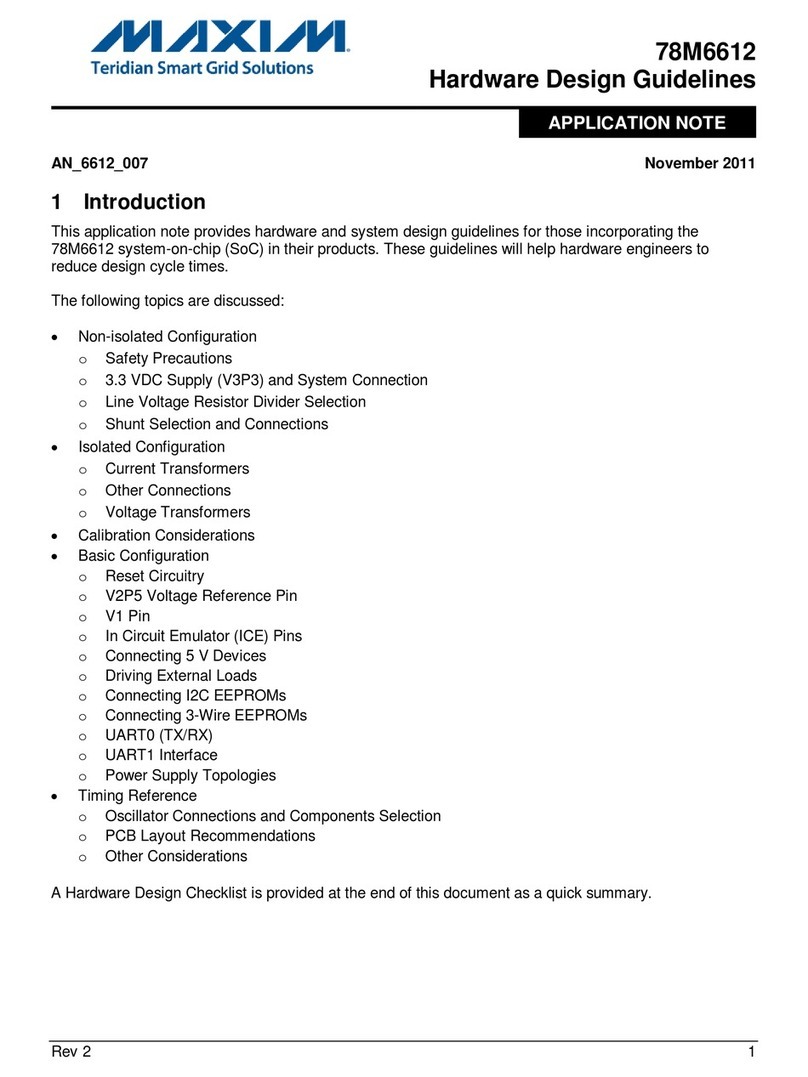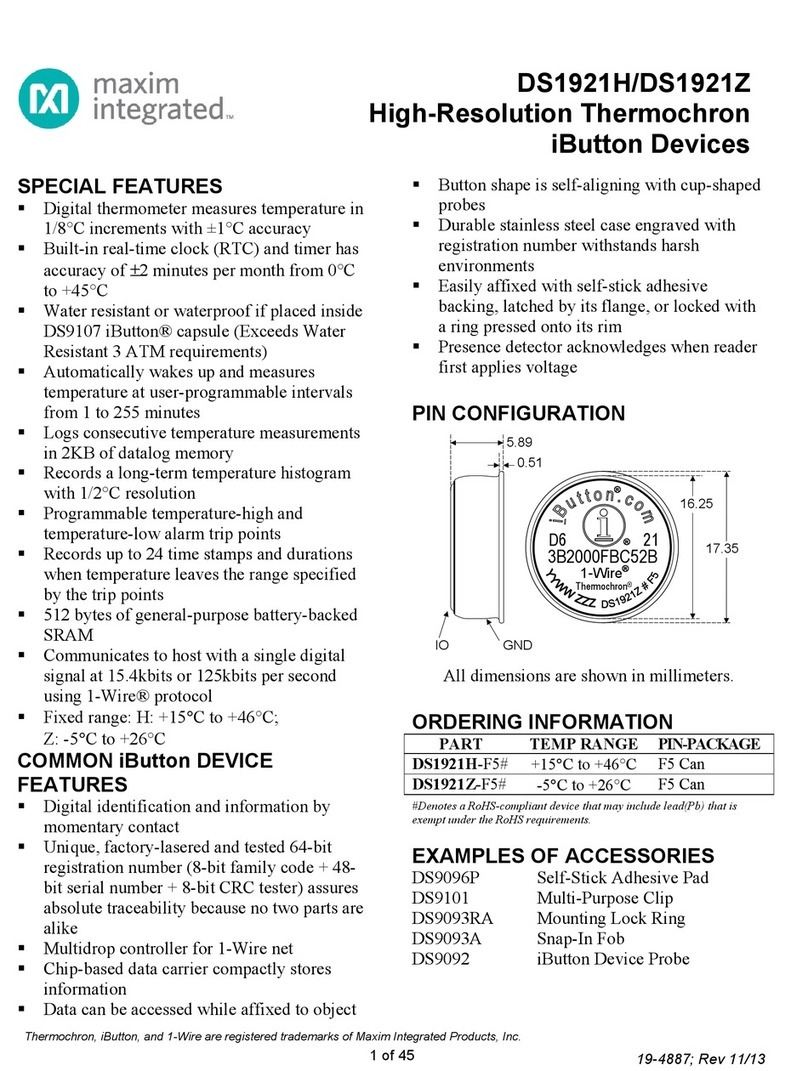
AN_6618_027 78M6618 Hardware Design Guidelines
Rev. 1.2 7
2.4.1 Single-ended Shunt Connections
Multi-shunt measurement systems typically require use of differential input circuits. These differential
input circuits add cost due to added components. The 78M6618 Evaluation Board presents a lower cost
multi-shunt measurement system alternative. Additionally, the proposed circuit design results in a very
compact printed board layout for a high accuracy energy measurement system.
The key for single ended measurements is a noise free reference point. Attaching multiple shunts to a
common reference point presents mechanical challenges due to physical size and placement. The linear
spacing required (side by side placement) for multiple shunts compromises the “noise free” reference
point. The resistance along a linear surface from one shunt to another is not insignificant relative to the
low ohms value of the current sensing shunt.
Measurement errors occur in adjacent shunts as the collective currents produce voltages in the
interconnecting “reference point” structure. The small resistance present in the interconnecting structure
between adjacent shunts creates this voltage offset when high load currents are present. The voltage
offset results in a measurement error for each shunt. Reducing the resistance of the interconnecting
structure is critical to achieving high accuracy in a single ended multi-shunt measurement system.
The 78M6618 Evaluation Board minimizes the interconnecting structure’s resistance and minimizes
adjacent shunt influences (error voltage due to load current) by employing a radial disk topology. The
78M6618 reference point utilizes a copper disk. The copper disk provides a much lower resistance
structure compared to 1 oz. copper plating. The thickness of the copper disk is equal to the printed circuit
board thickness for ease of manufacture. Uniform distance to the reference “center” point is achieved by
placing the shunts radially around the copper disk. Placing the shunts on both sides of the board
minimizes the diameter of the copper disk reducing the overall reference point resistance.
Figure 5: 78M6618 Evaluation Board Copper Disk with Radial Shunt Placement
The 78M6618 Evaluation Board is designed for a typical 15A household service. Ideally, a large current
load at one outlet should not affect the remaining outlets. Due to the finite resistance of the copper disk,
a measurement error is unavoidable. The copper disk’s resistance is calculated as follows:
Copper resistivity at 25C = 1.7 x 10-6 ohm-cm
Resistance = Resistivity*Length/Area*(1 + (Temp_Co*(Temp - 25))
Assuming a straight conduction path from the shunt to the copper disk center point:
Thickness = 62 mils, same as printed circuit board thickness
Width = 200 mils, width of shunt pad
Length = 100 mils, distance of shunt to center point
The linear resistance from the shunt to the copper disk center point = 5 µohm
Copper































